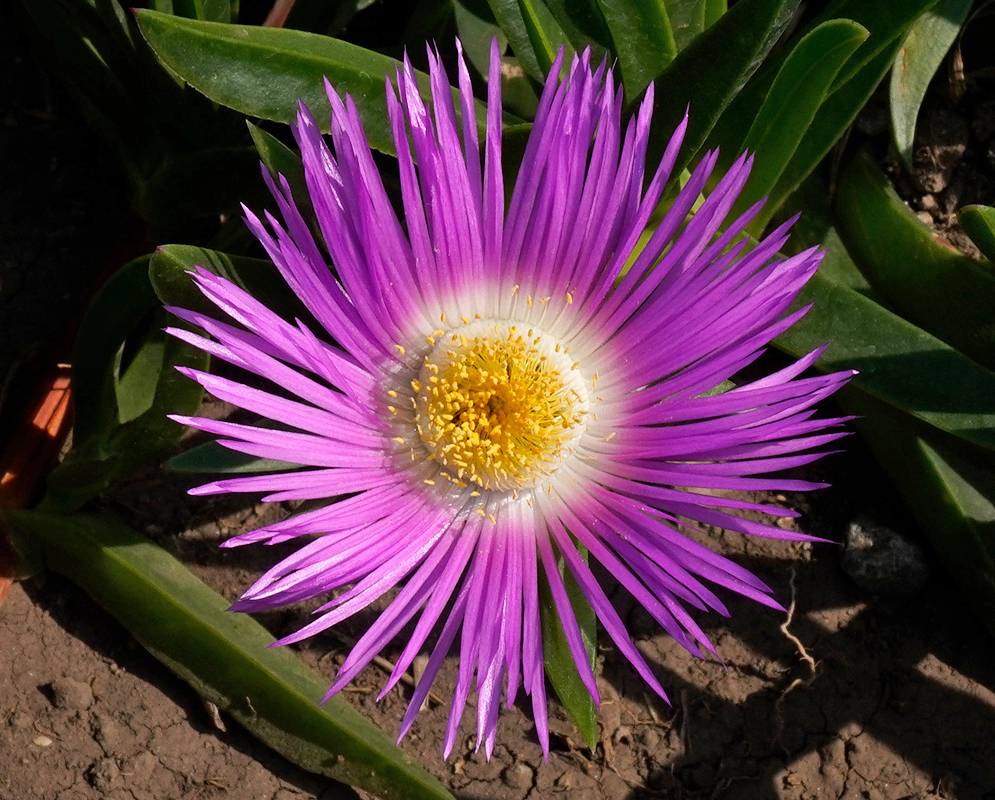This post has 11 Simple Fields-fields attached. Show fields.

Native to the Pacific coast of California and Baja California, Carpobrotus chilensis spreads as a perennial, mat-forming succulent on dunes, coastal bluffs, and disturbed sandy ground; it has been widely planted and is naturalized in other Mediterranean-climate shores. Known commonly as sea fig (also called coastal iceplant in California), it grows 4–8 in. tall and can carpet many feet across by rooting along prostrate stems, tolerating wind, salt spray, and episodic burial by shifting sand. Along the California coast it frequently occurs near plantings of the South African species C. edulis, and the two interbreed. Flowers are solitary and showy, opening in bright sun and closing toward evening; what look like dozens of narrow “petals” are actually staminodes surrounding a dense ring of fertile stamens and a central many-lobed stigma. The blossoms are usually magenta to lavender with a pale throat and measure roughly 3–5 in. across; fleshy, three-angled leaves form tight fans around the stems. Fruits ripen to a fig-like, edible capsule about 1–2 in. wide and were eaten fresh or dried, the leaves having an astringent, saline-sour taste that has seen traditional topical use for minor skin irritations. In horticulture it is valued for rapid dune binding and bank stabilization in coastal gardens of the western United States and other mild, dry coasts. Photographed in Lima, Peru.

